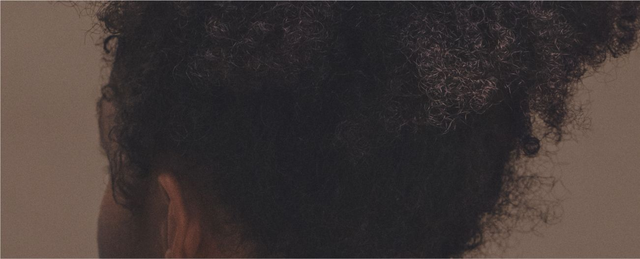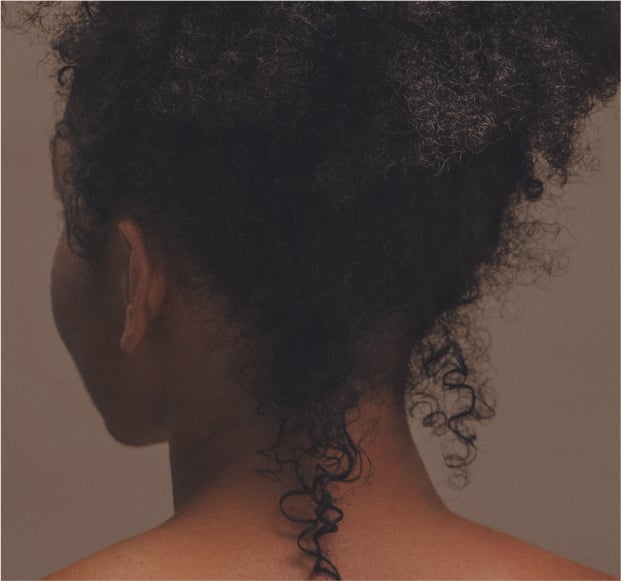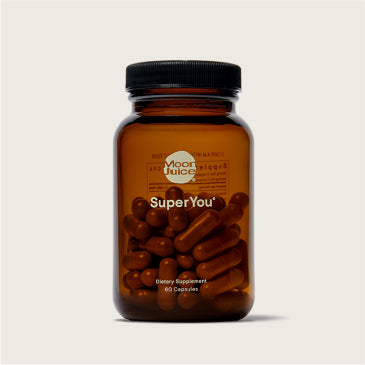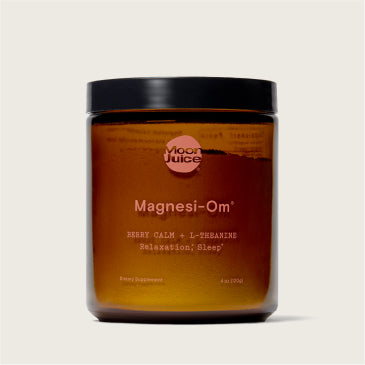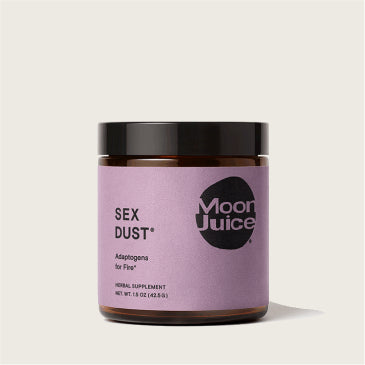Your hair can tell you a lot about what's going on inside your body. Damaged, thinning hair might mean that something's off internally. How you take care of your hair makes a difference, but ultimately, getting strong, thick locks is about building health from the inside out.
How to make your hair thicker? Bottom line: a balanced body = shiny, healthy hair. Here's how to care for yourself to beef up your tresses and eliminate bad hair days.
What determines hair thickness?
Stress, hormonal imbalances, nutritional deficiencies, and underlying medical conditions can all impact your hair’s thickness.
Your lifestyle choices can also make or literally break your hair. Excess shedding, slow hair growth, and hair prone to breakage might mean you’re missing out on necessary vitamins and minerals or need to take a break from styling habits.
While hair loss and thinning can be overwhelming, you can boost your hair health from the inside out and outside in, and achieve fuller locks.
12 Tips For How to Get Thick Hair
1. Feed Your Hair
What you eat can significantly impact your hair’s structure and growth. Missing out on the following key nutrients can leave your hair prone to breakage and excess shedding:
- Vitamin C
- Vitamin A
- Vitamin E
- Vitamin D
- Iron
- Zinc
- Biotin and other B Vitamins
These vitamins for thicker hair can help you to achieve your hair goals.
Protein intake is essential for your overall health, but did you know that it’s also crucial for maintaining hair health? The protein Keratin is your hair’s main building block, and lack of it can lead to breakage. Getting enough high-quality protein in your diet can help promote Keratin production and maintain hair strength and structure.
Healthy fats like Omega 3s are also essential for overall hair health. Balancing sebum levels helps moisturize hair and prevent dryness that can lead to build-up and slowed hair growth.
Aim to eat a nutrient-filled diet made up of varied whole foods, including fruits and vegetables, to meet dietary needs, avoid deficiencies, and prevent hair loss.
Balancing sebum levels helps moisturize hair and prevent dryness that can lead to build-up and slowed hair growth.
2. Take a Multivitamin
A healthy, whole-food diet is the best way to get all of your essential vitamins and minerals, but it’s not always easy to consume enough to supply your body with the building blocks it needs to produce healthy, flowing tresses. And sometimes, nutritional deficiencies have nothing to do with your diet. For example, when pregnant or breastfeeding, your body has a higher need for vitamins and minerals.
Taking a multivitamin designed to address nutrient deficiencies can help prevent hair damage and loss, turning thin, unhealthy strands into thick, strong locks.
SuperHair® is a bioavailable, vegan multiviamin + adaptogens, botanicals, and micronutrients to give your locks the building blocks they need.
3. Wash a New Way
Using the wrong products on your hair can take a heavy toll, weighing down your locks and making them look flat and lackluster.
Certain ingredients like sulfates can damage your hair, disrupt natural oil production, and may cause scalp irritation. There’s even evidence that parabens and phthalates, commonly found in hair and beauty products, might impact your hormones.
And while hair products containing silicone won’t affect your overall health, they can cause build-up that leaves your hair looking and feeling weighed down — in other words, bye-bye volume!
You can avoid these iffy ingredients by trying clean hair care products, like natural shampoos.
Additionally, if you have ultra-dry or curly hair, opting for a co-washing routine can help prevent build-up, dryness, and breakage that can lead to hair loss. Co-washing involves washing your hair with sulfate and silicone-free conditioner instead of shampoo, rinsing, then conditioning it as you usually would.
This double-conditioning routine avoids stripping your hair of its natural oils to prevent dryness that can cause damage and hair loss.
You can also consider using a hair mask designed to help fine hair to boost your hair washing efforts.
4. Get Regular Cuts
Regular visits to your hairstylist can help promote hair growth and get rid of damaged hair. Frequent fresh cuts tame unruly split ends and keep them from spreading, ensuring that your hair stays strong as it grows.
A great haircut can also make it look like you have thicker hair. Adding layers and texture to your hairstyle can give the appearance of fullness.
5. Manage Stress
A little bit of stress is a normal, even beneficial, part of life. But too much stress over a long period of time can show up as health problems — and even lead to hair loss.
Sudden, stress-related hair loss, also known as telogen effluvium, can happen for several reasons, including:
- Hormonal changes, like those related to pregnancy
- Metabolic stress, like getting surgery
- Emotional stress due to major life events like divorce
- Certain medications
While it’s unclear exactly how stress causes hair loss, recent evidence suggests high cortisol levels may play a role.
And because of the way your hair grows, hair loss due to stressful events might not show up until 2 to 3 months down the line — leading to more stress and possibly more hair loss. Actively dealing with stress by finding ways to promote calm and taking a daily supplement may mitigate potential future shedding.
SuperYou® is your daily stress management to help reduce cortisol by 24%. Think of it as a non-negotiable, like brushing your teeth.
6. Balance Your Hormones
Out-of-whack hormone levels can impact your whole body health, and even lead to sudden hair loss. Too much Dihydrotestosterone (DHT) can mess with your hair growth cycle, thinning out your hair and making it more likely to shed. Low levels of estrogen and progesterone, which can happen during menopause, can also impact hair follicle structure, causing it to shrink and fall out easily.
If you're worried about excessive hair thinning, talk with a health care practitioner about getting a hormone panel done. If things are out of balance, they can provide guidance on keeping your hormone levels in check.
7. Turn Down the Heat
Heat styling can lead to damage that turns your hair follicles into weaklings prone to breakage. If you can, try to avoid blow dryers and styling irons, and consider using no-heat products like flexible curling rods or foam rollers.
But if you can’t live without your 3-in-1 styling wand, use protective sprays before turning up the heat.
8. Massage Your Scalp
According to one small 2016 study, consistent scalp massage may help increase hair thickness by stretching out hair cells. There’s not quite enough research to call this a miracle hair-thickening strategy just yet, but there’s no harm in incorporating massage into your hair care ritual.
If it doesn’t lead to hair thickening, it might help you feel more relaxed and kick stress to the curb.
9. Skip the tight hairstyle
Frequently wearing your hair in tight pulled-back hairstyles might be why you’re experiencing higher-than-normal hair shedding, also known as traction alopecia. Very tight styles can lead to more breakage than you’re used to and, over time, can even damage hair follicles, potentially causing permanent hair loss.
Tight buns, ponies, and braids are OK sometimes, but try not to wear your hair pulled back 24/7. It’s an especially bad habit to sleep with your hair tightly secured. And if you’re not up for letting your hair down, consider wearing your favorite updo a little looser.
10. Use thickening products
More research needs to be done, but people from ancient cultures, Cleopatra included, once used olive oil to beautify their skin and thicken hair. This is likely because the plant oil is antioxidant-rich and highly moisturizing, making it a nourishing ingredient for the hair and scalp. Infusing your hair with moisture is one way to get fuller-looking and healthier hair, especially if it’s already ultra-dry and damaged.
11. Shield Your Strands
By now, you’re probably clear on the link between hair damage and loss and understand that minimizing damage can help limit hair thinning.
UV radiation can cause your hair to lose protein, weakening it and making it prone to breakage. Try the following to protect your scalp and hair from sun damage:
- Use haircare products with UV filters
- Apply sunscreen to your scalp if you plan to be out in the sun for long periods
- Wear a hat on extra sunny days
- Stay out of the sun on days where UV radiation is high
12. Get Plenty of Zzz’s
Oh, the wonders a good night’s sleep will do for you.
Sleep doesn’t just recharge your mind and body — it can repair your hair and scalp, too. When you skimp on sleep, you risk elevating your cortisol levels, which impact hair health, slowing growth, and contributing to thinning.
There’s also evidence that sleep disorders, like insomnia, might contribute to alopecia areata. This autoimmune condition causes the body to attack hair follicles, leading to bald patches on the scalp and other parts of the body.
When you skimp on sleep, you risk elevating your cortisol levels, which impact hair health, slowing growth, and contributing to thinning.
Getting checked out by a medical doctor can determine if an underlying condition like sleep apnea is messing with your sleep. But if you’re otherwise in good health, you can try to:
- Keep a regular sleep schedule
- Ban electronics and screens from your bedroom since blue light can disrupt your body’s natural melatonin production
- Cultivate a relaxing sleep environment by minimizing noise and light
- Soak in a hot bath a few hours before bed to increase your body temp and let your body know to prepare for bed
- Increase your activity levels
Head outside to enjoy some sunshine first thing to get your circadian clock back on track
Sign Up, Nerd Out
Get wellness tips, education, and recipes
delivered straight to your inbox.
Get wellness tips, education,
and recipes delivered
straight to your inbox.
Sources
- Almohanna HM, et al. (2019). The role of vitamins and minerals in hair loss: A review. https://www.ncbi.nlm.nih.gov/pmc/articles/PMC6380979/
- Dias MFRG, et al. (2021). Hair cosmetics for the hair loss patient. https://www.ncbi.nlm.nih.gov/pmc/articles/PMC8719955/
- Effects of light on circadian rhythms. (2020). Effects of light on circadian rhythms. (2020).
- Grymowicz M, et al. (2020). Hormonal effects on hair follicles. https://www.ncbi.nlm.nih.gov/pmc/articles/PMC7432488/
- Guo EL, et al. (2017). Diet and hair loss: Effects of nutrient deficiency and supplement use. https://www.ncbi.nlm.nih.gov/pmc/articles/PMC5315033/
- Hairstyles that pull can lead to hair loss. (n.d.). https://www.aad.org/public/diseases/hair-loss/causes/hairstyles
- How stress causes hair loss. (2021). https://www.nih.gov/news-events/nih-research-matters/how-stress-causes-hair-loss
- Hughes EC, et al. (2022). Telogen effluvium. https://pubmed.ncbi.nlm.nih.gov/28613598/
- Koyama T, et al. (2016). Standardized scalp massage results in increased hair thickness by inducing stretching forces to dermal papilla cells in the subcutaneous tissue. https://www.ncbi.nlm.nih.gov/pmc/articles/PMC4740347/
- Malkani RH, et al. (2020). Hair styling procedures and hair morphology: A clinico-microscopic comparison study. https://www.ncbi.nlm.nih.gov/pmc/articles/PMC7413455/
- Mlili NE, et al. (2021). Hair cortisol concentration as a biomarker of sleep quality and related disorders. https://pubmed.ncbi.nlm.nih.gov/33499247/
- Sebetic K, et al. (2008). UV damage of the hair. https://pubmed.ncbi.nlm.nih.gov/19138021
- Seo H, et al. (2018). The risk of alopecia areata and other related autoimmune diseases in patients with sleep disorders A Korean population-based retrospective cohort study. https://pubmed.ncbi.nlm.nih.gov/29955877/
- Suchonwanit P, et al. (2019). Minoxidil and its use in hair disorders: A review. https://www.ncbi.nlm.nih.gov/pmc/articles/PMC6691938/
- Tai Y, et al. (2021). Hot-water bathing before bedtime and shorter sleep onset latency are accompanied by a higher distal-proximal skin temperature gradient in older adults. https://pubmed.ncbi.nlm.nih.gov/33645499/
- Tips for better sleep. (2022). https://www.cdc.gov/sleep/about_sleep/sleep_hygiene.html
- Women Writers of Ancient Greece and Rome: An Anthology. United States, University of Oklahoma Press, 2004.

